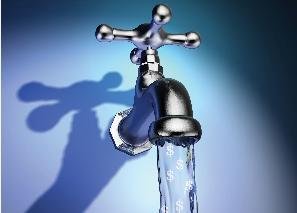It is no secret that rates for water and wastewater utilities are rising significantly across the country. As these rates rise, the consumer is questioning “why� A July 7, 2017 article in the Los Angeles Times reported that the next crisis for California will be the affordability of water. Water rates in America have increased 41 percent since 2010, and if they continue at that pace over the next five years the number of households that cannot afford water and wastewater services could soar to an estimated 40.9 million, or 35.6 percent of all households, according to new research Prof. Elizabeth Mack of Michigan State University.
One driving factor is aging infrastructure. Experts say it will cost more than $1 trillion to replace World War II-era water systems over the next 25 years. Another pressure is climate change, as more intense weather events fuel a need for improvements to wastewater facilities. Making such adaptations will cost the United States more than $36 billion by 2050, according to estimates.
In addition, shrinking populations in major cities such as Detroit and Philadelphia means fewer people to pay for the large fixed cost of water service. Approximately 227,000 customers in Philadelphia, or 4 out of 10 water customers, are past due, while 50,000 delinquent customers in Detroit have had their water service cutoff since the start of 2014, the study says. Households in Atlanta and Seattle are paying more than $300 a month for water and wastewater services (based on a family of four).
Ultimately, according to the study, governments, utilities and consumers will need to work together to solve the growing affordability problem.
“Water is a fundamental right for all humans,” Mack said. “However, a growing number of people in the United States and globally face daily barriers to accessing clean, affordable water.”
The public wants to know how their local water utilities are going to utilize the monies they are collecting in excess of previous years. Despite rising costs in the water and wastewater industry due to infrastructure challenges, the public is demanding greater efficiency. There is more pressure being applied to water utilities to show efficiencies in their operations by unhappy ratepayers facing ever-increasing water rates. There couldn’t be a more opportune time for water utilities to embrace technological solutions that will make them more efficient and reduce costs.
Innovation abounds in the water industry. There are numerous projects going on that address core flaws in the system, as well as meet the demand for cleaner water. These include:
– Conserving and recovering energy
– Recovering nutrients
– Improving and greening of the water infrastructure
– Conserving and eventually reusing water
– Reducing costs and improving techniques for water monitoring
– Improving performance of small drinking water systems
– Reducing water impacts from energy production
– Improving resiliency of water infrastructure to the impacts of climate change
– Improving access to safe drinking water and sanitation
– Improving water quality of our oceans, estuaries, and watersheds
The sheer number of water and wastewater utilities (over 70,000) makes it difficult for companies with new efficiency-creating technologies to locate new utility customers. The affordability of water will depend in part on the speed at which new technologies can be implemented to reduce costs and improve efficiency in the water sector. H2bid provides solutions that make it easier for companies with new technologies to identify new customers. H2bid will continue to serve the wat

